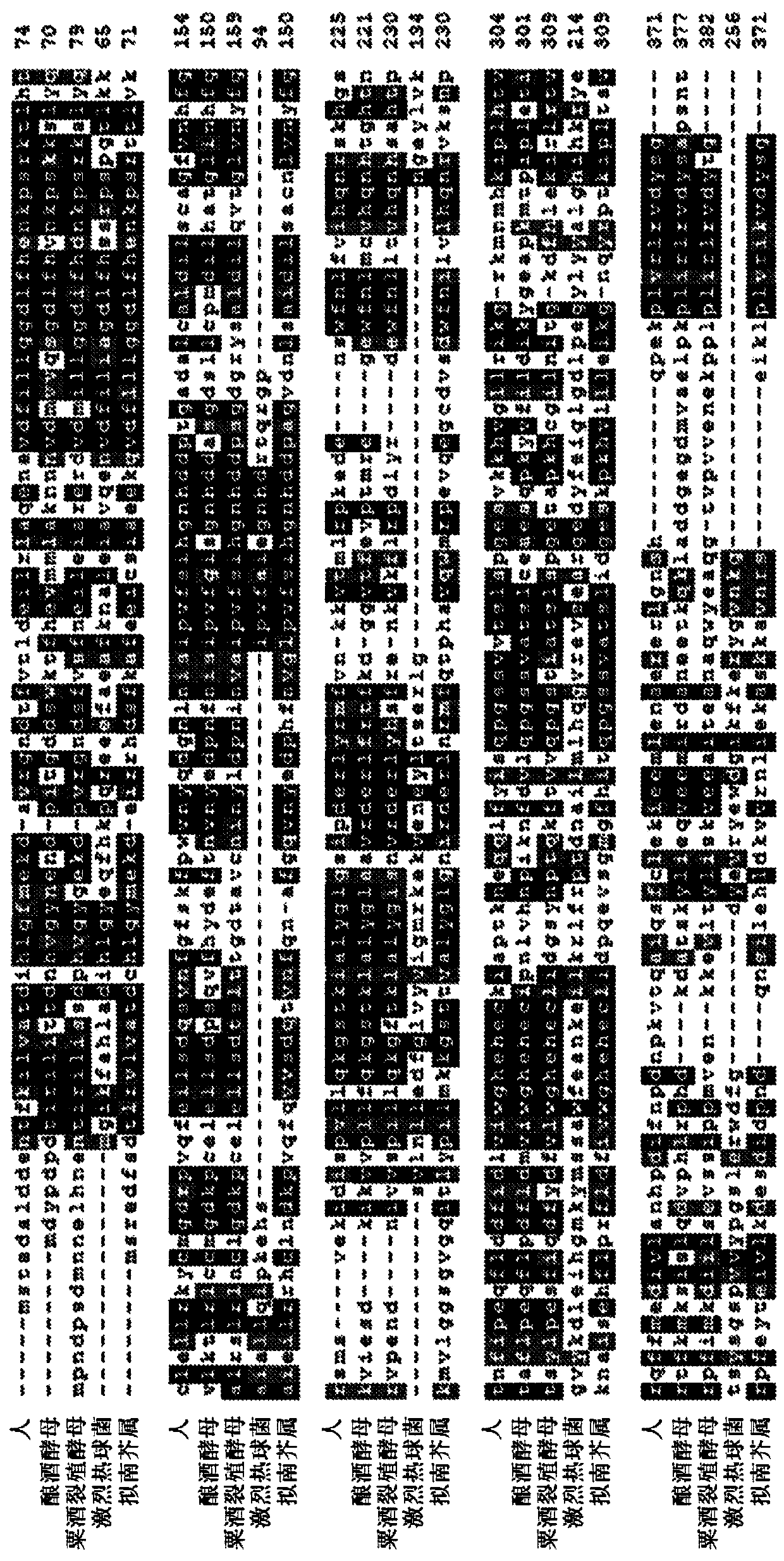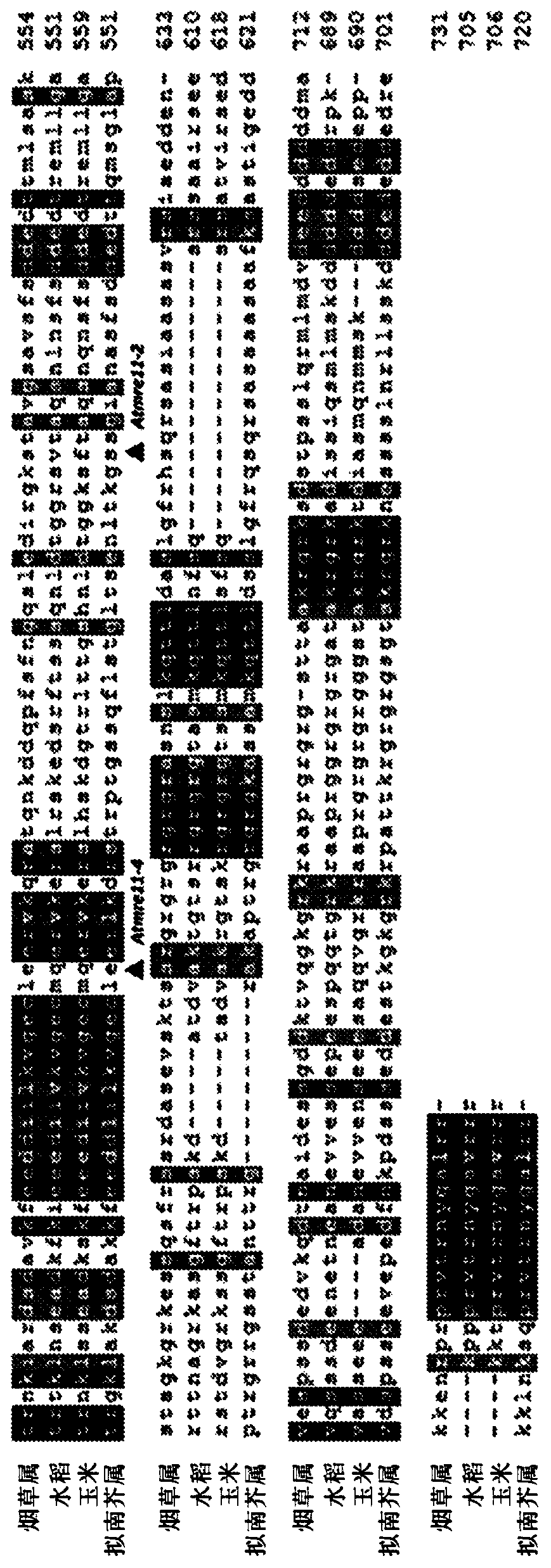Combinational strategy for reducing ransom integration events when transfecting plants
A random integration, plant technology, applied in the direction of using vectors to introduce foreign genetic material, recombinant DNA technology, biochemical equipment and methods, etc., can solve problems such as harmful effects on host organisms
- Summary
- Abstract
- Description
- Claims
- Application Information
AI Technical Summary
Problems solved by technology
Method used
Image
Examples
Embodiment 1
[0161] Example 1: Preventing DNA Integration in Plants by Combinatorial Inactivation of Plant Factors
[0162] background
[0163] Genetic modification of plants is now routinely performed. Transformation can be performed by a variety of methods and vectors including Agrobacterium tumefaciens. Transgenes have been observed to integrate in variable copy numbers at fairly random locations in the plant genome by non-homologous recombination (NHR). This can lead to position effects (such as transgene silencing) and genetic mutations at the integration site. Targeted DNA integration via homologous recombination (HR) would avoid this adverse effect while opening the possibility of introducing targeted mutations and edits into the genome via HR. This works well in yeast, but is a rare event in the somatic cells of higher plants. Indeed, integration through the NHR is rare in yeast, strongly favoring integration through the HR. An advantageous way of introducing genes into plant ...
Embodiment 2
[0200] Example 2: Homologous recombination
[0201] Example 1 shows that functional mre11 and Ku80 are required for stable random integration of T-DNA. This example demonstrates that stable integration by homologous recombination does not require functional mre11 and Ku80.
[0202] A T-DNA construct was prepared with about 6 kb of homology to the endogenous Arabidopsis locus protophorphyrinogen oxidase (PPO). The region of homology contains two point mutations that, after integration at the PPO locus by homologous recombination, confer resistance to the herbicide butafenicil (for a description of the mutations, see Hanin et al, Plant J 2001). In addition, the T-DNA encodes the Cas9 enzyme (Arabidopsis codon-optimized Cas9-AteCas9 (Fauser et al. Plant J 79:348-3592014)) and a guide RNA that directs the Cas9 enzyme to the PPO locus. The expression of Cas9 is driven by the ubiquitin promoter, and the guide RNA is under the control of the U6 (AtU6) promoter.
[0203] Wild-type...
Embodiment 3
[0205] Example 3: Homologous recombination
[0206] A combination of functional Pol θ and / or Ku80 is required for stable random integration of the T-DNA. This example demonstrates that stable integration by homologous recombination does not require functional Pol θ and / or Ku80.
[0207] A T-DNA construct was prepared with approximately 6 kb of homology to the endogenous Arabidopsis locus protoporphyrinogen oxidase (PPO). The region of homology contains two point mutations that, after integration at the PPO locus by homologous recombination, confer resistance to the herbicide flumethazine (see Hanin et al, Plant J 2001 for a description of the mutations) . In addition, the T-DNA encodes the Cas9 enzyme (Arabidopsis codon-optimized Cas9-AteCas9 (Fauser et al. Plant J 79:348-3592014)) and a guide RNA that directs the Cas9 enzyme to the PPO locus. The expression of Cas9 is driven by the ubiquitin promoter, and the guide RNA is under the control of the U6 (AtU6) promoter.
[02...
PUM
 Login to View More
Login to View More Abstract
Description
Claims
Application Information
 Login to View More
Login to View More - R&D
- Intellectual Property
- Life Sciences
- Materials
- Tech Scout
- Unparalleled Data Quality
- Higher Quality Content
- 60% Fewer Hallucinations
Browse by: Latest US Patents, China's latest patents, Technical Efficacy Thesaurus, Application Domain, Technology Topic, Popular Technical Reports.
© 2025 PatSnap. All rights reserved.Legal|Privacy policy|Modern Slavery Act Transparency Statement|Sitemap|About US| Contact US: help@patsnap.com



